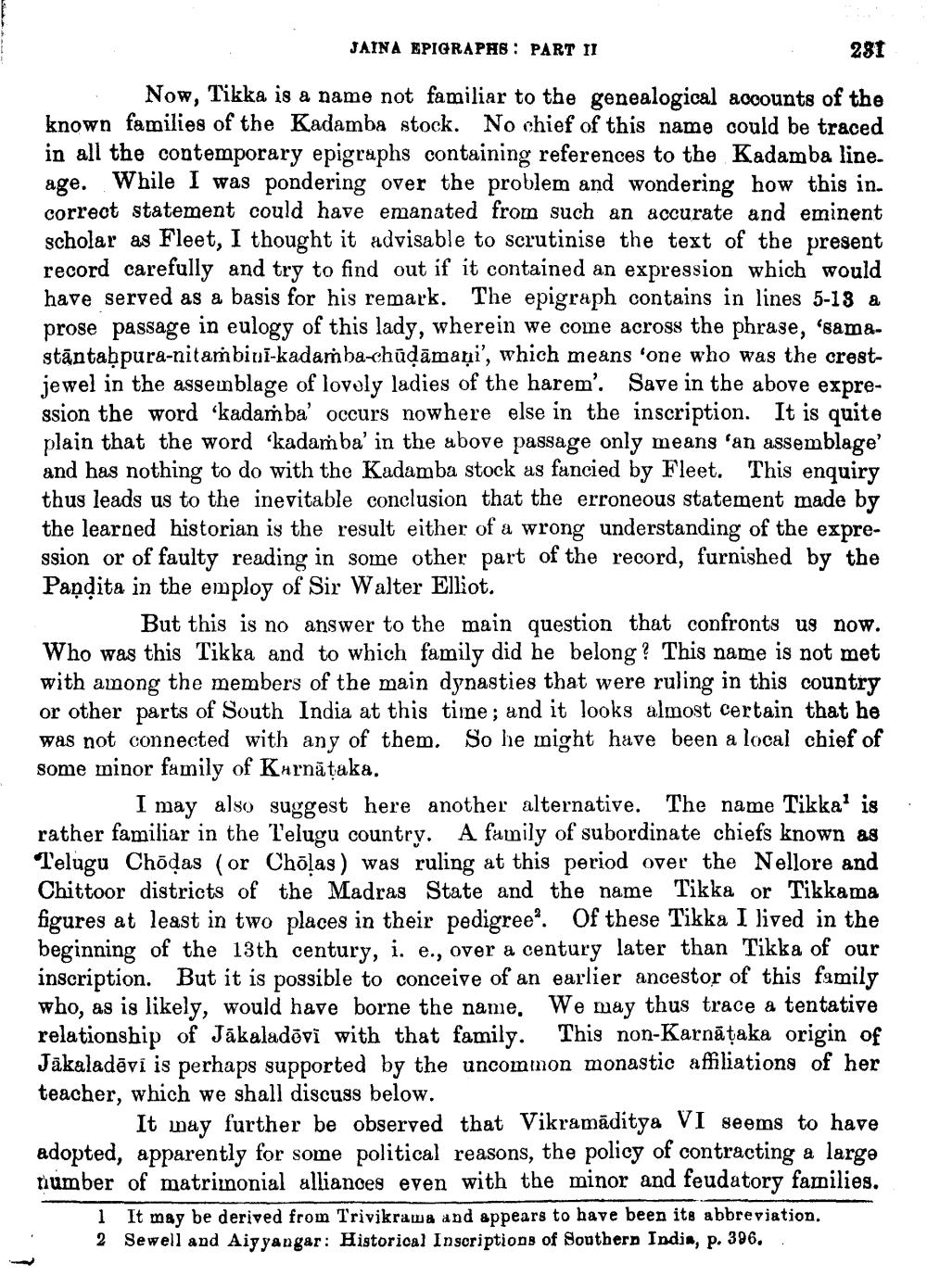________________
JAINA EPIGRAPHS : PART II
281 Now, Tikka is a name not familiar to the genealogical accounts of the known families of the Kadamba stock. No chief of this name could be traced in all the contemporary epigraphs containing references to the Kadamba line. age. While I was pondering over the problem and wondering how this in. correct statement could have emanated from such an accurate and eminent scholar as Fleet, I thought it advisable to scrutinise the text of the present record carefully and try to find out if it contained an expression which would have served as a basis for his remark. The epigraph contains in lines 5-13 a prose passage in eulogy of this lady, wherein we come across the phrase, 'samastāntahpura-nitambini-kadamba-chūļāmaņi', which means 'one who was the crestjewel in the assemblage of lovely ladies of the harem'. Save in the above expression the word “kadamba' occurs nowhere else in the inscription. It is quite plain that the word 'kadamba' in the above passage only means 'an assemblage' and has nothing to do with the Kadamba stock as fancied by Fleet. This enquiry thus leads us to the inevitable conclusion that the erroneous statement made by the learned historian is the result either of a wrong understanding of the expression or of faulty reading in some other part of the record, furnished by the Pandita in the employ of Sir Walter Elliot.
But this is no answer to the main question that confronts us now. Who was this Tikka and to which family did he belong? This name is not met with among the members of the main dynasties that were ruling in this country or other parts of South India at this time; and it looks almost certain that he was not connected with any of them. So he might have been a local chief of some minor family of Karnataka.
I may also suggest here another alternative. The name Tikkal is. rather familiar in the Telugu country. A family of subordinate chiefs known as Telugu Chöļas (or Cholas ) was ruling at this period over the Nellore and Chittoor districts of the Madras State and the name Tikka or Tikkama figures at least in two places in their pedigree'. Of these Tikka I lived in the beginning of the 13th century, i. e., over a century later than Tikka of our inscription. But it is possible to conceive of an earlier ancestor of this family who, as is likely, would have borne the name. We may thus trace a tentative relationship of Jākaladõvi with that family. This non-Karnāțaka origin of Jākaladēvi is perhaps supported by the uncommon monastic affiliations of her teacher, which we shall discuss below.
It may further be observed that Vikramāditya VI seems to have adopted, apparently for some political reasons, the policy of contracting a large number of matrimonial alliances even with the minor and feudatory families.
1 It may be derived from Trivikrama and appears to have been its abbreviation. 2 Sewell and Aiyyangar: Historical Inscriptions of Southern India, p. 396..




